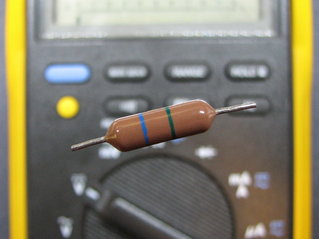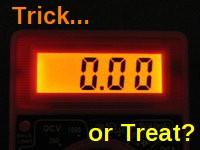 Not much repair activity lately, but in honor of Halloween, note that a photo gallery of cheap multimeters of the “Harbor Fright” variety has been posted. New also is a quick look inside the Weston 6100 Roadrunner.
Not much repair activity lately, but in honor of Halloween, note that a photo gallery of cheap multimeters of the “Harbor Fright” variety has been posted. New also is a quick look inside the Weston 6100 Roadrunner.
-
Recent Posts
Chatter
- Dave Wise on Keithley 135 DMM
- Nico Groß on Fluke 83 DMM Repair
- Nico Groß on Fluke 83 DMM Repair
- Dave Wise on Fluke 87 Fusible Resistor
- Andy Preston on Beckman Industrial HD110 Multimeter
- Kenn on HP 3468A Bench Multimeter Repair
- Kenn on HP 3468A Bench Multimeter Repair
- Lope A. Marcos on Fluke 80-series Jack Assembly Rebuild
Tags
Categories
Archives
Forums
Helpful Vendors
More To Explore
YouTube Channels

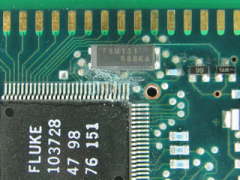 The Fluke 26-III and 79-III models are identical except for the model number. This model adds some extra features not available on the 77-III (and its identical twin the 23-III), like frequency and capacitance measurement, 4000 counts vs. 3200, RMS response, and a faster update speed. It also has a special 40-ohm resistance range that provides 10 milli-ohm resolution, aimed at electricians who may want to measure and compare contact resistances on relays and switches. It’s not a bad tool for the electronics workbench either, provided you do not need precise measurements of current in the micro-amp range. It does however have 1μA resolution in its lowest current range (4mA).
The Fluke 26-III and 79-III models are identical except for the model number. This model adds some extra features not available on the 77-III (and its identical twin the 23-III), like frequency and capacitance measurement, 4000 counts vs. 3200, RMS response, and a faster update speed. It also has a special 40-ohm resistance range that provides 10 milli-ohm resolution, aimed at electricians who may want to measure and compare contact resistances on relays and switches. It’s not a bad tool for the electronics workbench either, provided you do not need precise measurements of current in the micro-amp range. It does however have 1μA resolution in its lowest current range (4mA).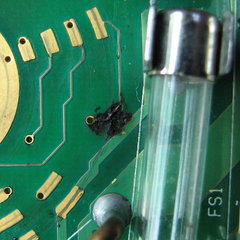 No this is not about green energy or climate change. It’s about DMM repair, of course. I found it interesting for two reasons, the fact that a very simple fault almost escaped detection, and that the root cause was, while totally obvious to the naked eye, possible to dismiss as just a cosmetic problem.
No this is not about green energy or climate change. It’s about DMM repair, of course. I found it interesting for two reasons, the fact that a very simple fault almost escaped detection, and that the root cause was, while totally obvious to the naked eye, possible to dismiss as just a cosmetic problem.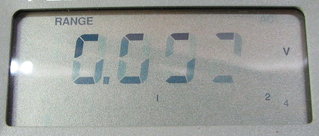 This is probably the single most common problem with older Fluke DMMs such as the 83, 85, 87, and 88 models. Referred to as “faded digits”, “faded segments” or “fading display”, it happens when the connections between the printed circuit board and the glass display panel become contaminated enough that the
This is probably the single most common problem with older Fluke DMMs such as the 83, 85, 87, and 88 models. Referred to as “faded digits”, “faded segments” or “fading display”, it happens when the connections between the printed circuit board and the glass display panel become contaminated enough that the 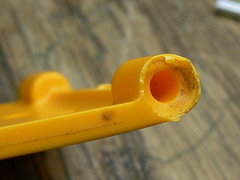 Does your Fluke 179 have a loose kickstand (tilt stand, tilting bail) that pops out whenever you try to prop it up for use on the workbench? Blog reader LDSisHere from over at
Does your Fluke 179 have a loose kickstand (tilt stand, tilting bail) that pops out whenever you try to prop it up for use on the workbench? Blog reader LDSisHere from over at 